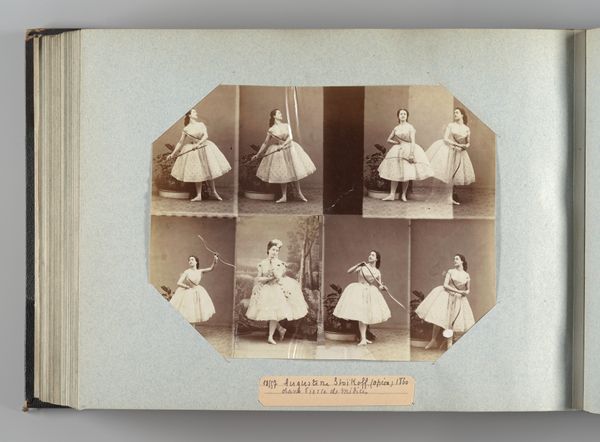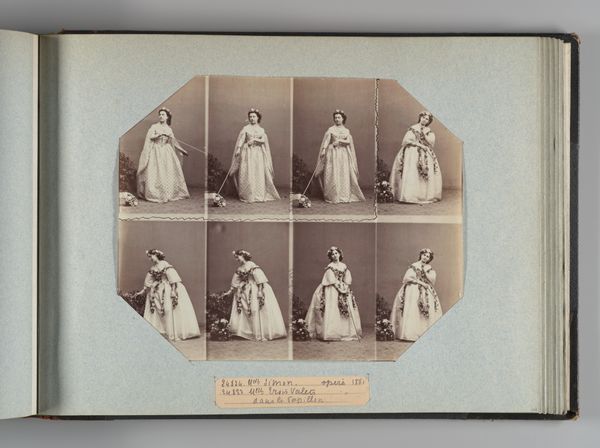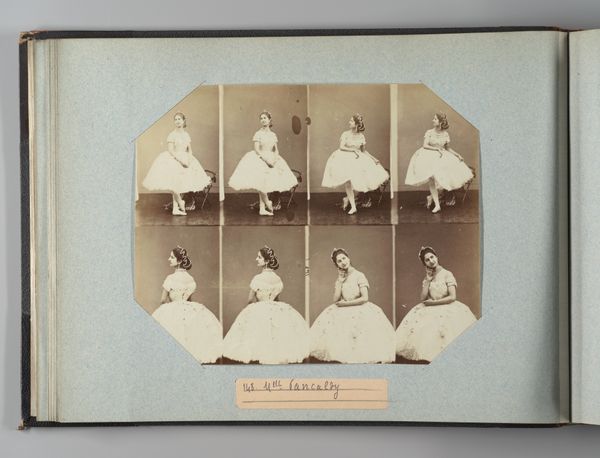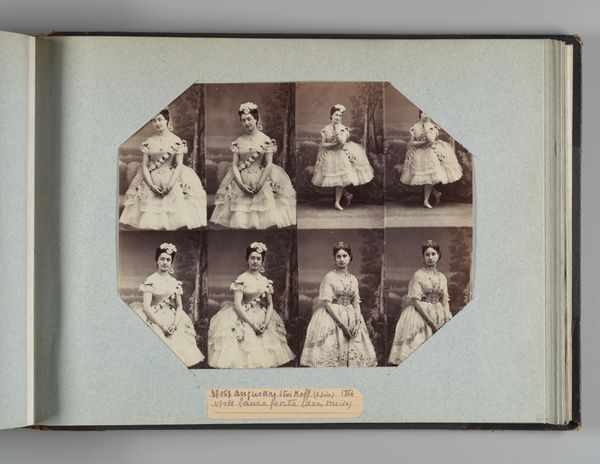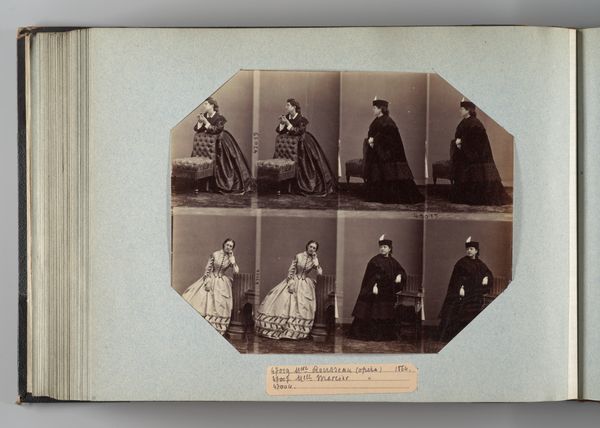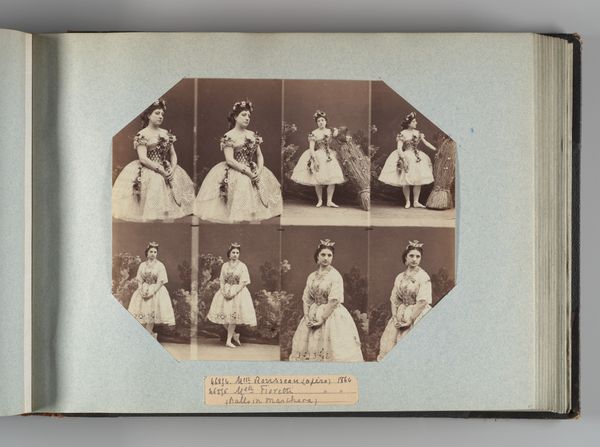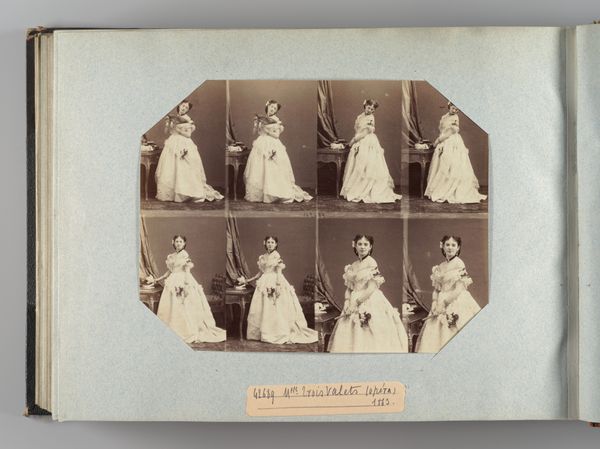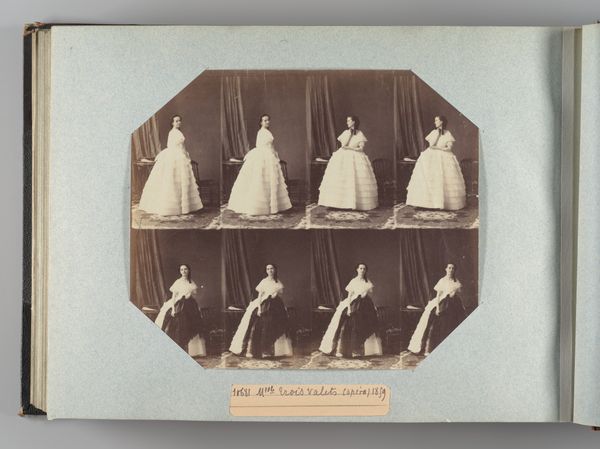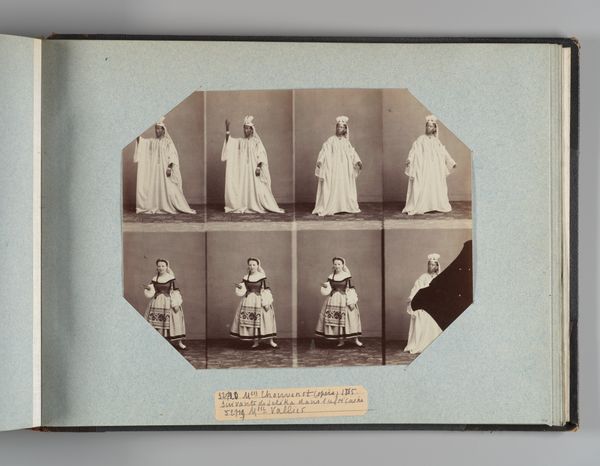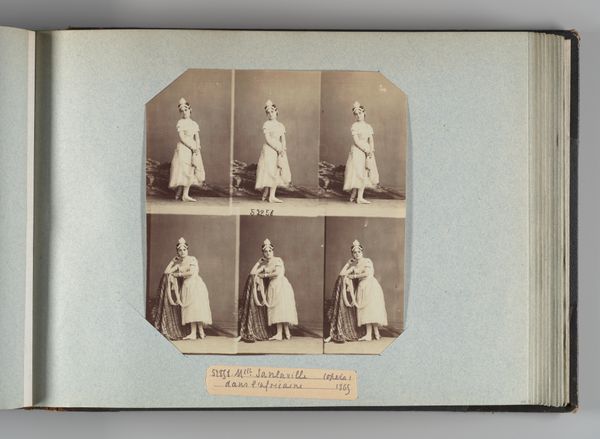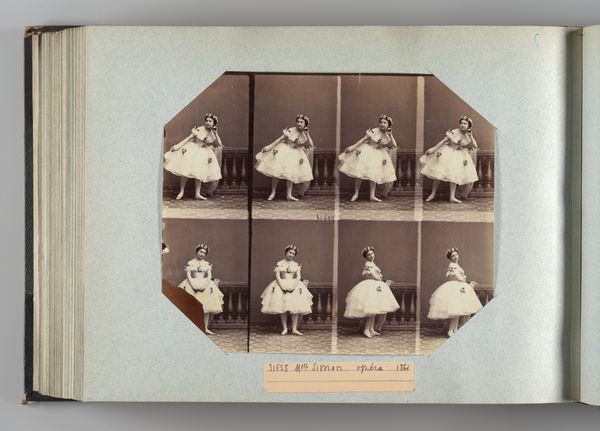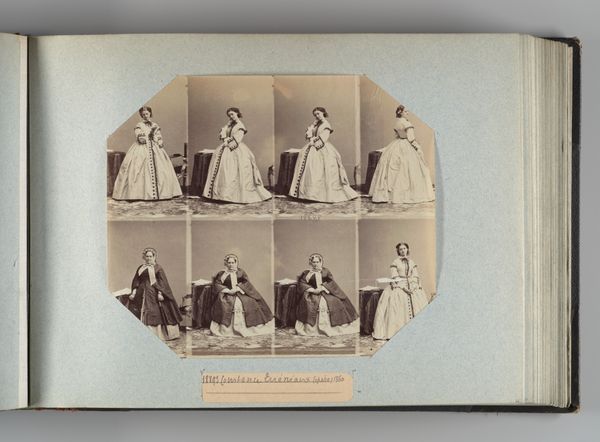
photography, albumen-print
#
portrait
#
photography
#
genre-painting
#
modernism
#
albumen-print
Dimensions: Image: 7 3/8 × 9 1/4 in. (18.8 × 23.5 cm) Album page: 10 3/8 × 13 3/4 in. (26.3 × 35 cm)
Copyright: Public Domain
Curator: Here we see André-Adolphe-Eugène Disdéri’s 1862 albumen print titled “Mlle Moncelet; Mlle Rousseau,” currently housed in the Metropolitan Museum of Art. Editor: Immediately striking is the serial repetition—like a sheet of postage stamps featuring these two women. It's a curious, almost uncanny effect. Curator: Exactly. It really speaks to the emerging technologies of the time. Disdéri patented this carte-de-visite format, this multiplying of images on a single print, which democratized portraiture but also transformed labor within photographic studios. Consider the seamstresses who fashioned those pristine gowns, all part of a carefully constructed performance. Editor: Absolutely. It reminds us that photography was, even then, a manufactured reality, not just a neutral recording. What's compelling to me is what this image communicates about contemporary ideas of feminine identity and performativity. Curator: Right, we're seeing the dawn of consumer culture reflected through this particular mode of portraiture. This mass production of likeness allowed for new modes of display. The photograph circulated to the general public. Editor: Yes, there’s also a certain objectification inherent in it, reducing these women to almost interchangeable commodities. How complicit were Mlles. Moncelet and Rousseau? And did they benefit from this exchange? Curator: It's difficult to determine what level of agency they had or performed. Regardless, they contributed, visibly, to an ever increasing industrial complex. Editor: These multiple exposures provide a unique, material perspective, beyond simply documenting identity; instead, they reveal photography's place as a new technology and the changing fabric of societal perceptions during its rise. Curator: I appreciate how that shifts our consideration. It moves beyond just 'who' is photographed, prompting us to really question the implications of how photography transformed visual culture and material production, reshaping not only representation but societal structures themselves. Editor: And it forces us to examine, from a grounded, material point of view, the industrial conditions and the very labor that shaped this iconic imagery.
Comments
No comments
Be the first to comment and join the conversation on the ultimate creative platform.
